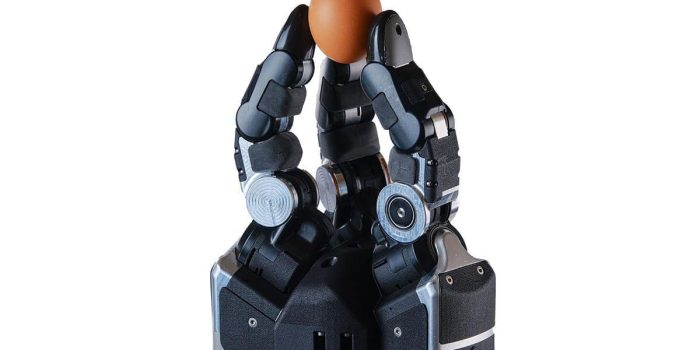The innovative new model that Shadow Robot, a London-based company known for their incredibly skilled robot hands, has introduced is especially made for the demanding field of machine learning research. This novel hand represents a major breakthrough in AI hardware, as it was created in partnership with Google’s DeepMind to balance robustness with dexterity.
While previous Shadow hand designs closely resembled human hands, the new Shadow Hand takes a different approach. It features three three-fingered grippers, a design choice driven by the need for AI research hardware to withstand the inevitable bumps and bruises that come with robot learning. The press statement from Shadow Robot acknowledges this challenge: “A key challenge in AI and robotics is to develop hardware that is dexterous enough for complex tasks, but also robust enough for robot learning. Robots learn through trial and error, which requires them to safely test things in the real world, sometimes executing motions at the limit of their abilities. This can cause damage to the hardware, and the resulting repairs can be costly and slow down experiments.”
The Shadow Hand addresses this concern by being built to endure “a significant amount of misuse, including aggressive force demands, abrasion and impacts.” This durability is crucial for researchers who need hardware that can withstand the constant experimentation involved in training AI algorithms.
The Shadow Hand is a powerful tool despite emphasizing durability. A force of 10 N can be applied by each finger, enabling the manipulation of a variety of items. Furthermore, the fingers exhibit remarkable speed and accuracy as they go from fully open to closed in under 500 milliseconds. To augment its functionality even more, the Shadow Hand has 3D touch sensors on each fingertip in addition to a stereo camera system embedded in the silicone fingertips. With the help of this combination, the robot may receive tactile input that is high-resolution, wide dynamic range, and real-time, which helps it to gain a sophisticated understanding of the items it interacts with. To put it simply, the Shadow Hand gives robots the ability to feel, which is essential for manipulating objects successfully in the real world.
The Shadow Hand’s design also prioritizes repairability. Each finger is a self-contained unit, allowing researchers to quickly replace damaged modules with fresh ones, minimizing downtime during research projects. This modular design ensures that experiments can continue uninterrupted, even if a finger sustains damage during particularly demanding trials.
With its remarkable blend of robustness, agility, and sophisticated sensory functions, the Shadow Hand is a major advancement in hardware for AI research. This innovative invention will be unveiled for the first time by Shadow Robot at ICRA 2024 in Yokohama, Japan. Although the Shadow Hand’s price has not yet been disclosed, researchers from all over the world will undoubtedly be very interested in using it to further their quest for ever-more-advanced artificial intelligence.


